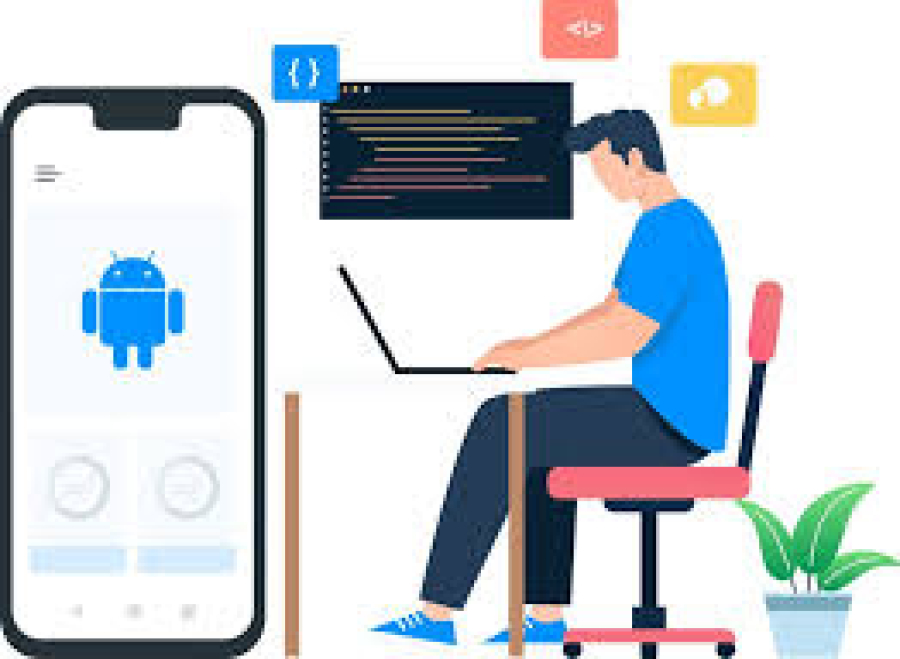Top 10 Emerging Technologies for Freelancers
The world of freelancing is evolving rapidly, driven by the rise of powerful and disruptive technologies. While remote work and digital platforms have already reshaped the freelance economy, the next wave of innovation is coming from emerging technologies — and they’re not just for big enterprises. From artificial intelligence to blockchain, and from Web 3.0 to augmented reality, freelancers now have access to tools and platforms that can enhance productivity, reduce costs, and unlock new income streams.
At freelancerbridge, we believe in preparing independent professionals for the future. Whether you're a designer, developer, writer, marketer, or consultant, these technologies will shape how you work, who you work with, and what you can offer. In this article, we’ll dive into the top 10 emerging technologies every freelancer should know, why they matter, and how to start integrating them into your business today.
Long Description:
1. Artificial Intelligence (AI) and Machine Learning (ML)
Why it matters for freelancers:
AI isn’t just automating tasks — it’s becoming a co-creator. Tools powered by AI help freelancers generate content, write code, analyze data, and automate workflows.
Freelance use cases:
AI writing assistants (e.g., Jasper, Grammarly)
ChatGPT for client communication or code suggestions
Automated image generation (e.g., Midjourney, DALL·E)
Data analysis and market trend predictions
How to get started:
Explore AI tools relevant to your field (e.g., AI SEO tools for marketers, AI design tools for creatives)
Learn prompt engineering basics
Combine AI with your creative input to deliver faster and smarter solutions
2. Blockchain Technology
Why it matters for freelancers:
Blockchain offers decentralization, transparency, and smart contracts, giving freelancers more control over payments and project agreements.
Freelance use cases:
Smart contracts for milestone-based payments
Crypto payments via platforms like Bitwage or Coinbase
Decentralized project management platforms
NFTs for digital artists and creators
How to get started:
Learn blockchain basics and how Ethereum smart contracts work
Use platforms like OpenSea (for creators) or Kleros (for decentralized dispute resolution)
Accept crypto payments securely
3. Web 3.0 Technologies
Why it matters for freelancers:
Web 3.0 is about ownership and decentralization — enabling creators and professionals to own their content, identity, and data.
Freelance use cases:
Joining decentralized marketplaces like Braintrust or TalentLayer
Monetizing content through token-gated access
Building portfolio websites on decentralized hosting
How to get started:
Create a crypto wallet (e.g., MetaMask)
Experiment with Web 3.0 platforms and DAOs
Build a Web 3.0-ready resume or profile
4. Augmented Reality (AR) and Virtual Reality (VR)
Why it matters for freelancers:
AR/VR is opening up new forms of immersive experiences in design, training, education, and marketing — and clients are investing in it.
Freelance use cases:
VR training modules
AR product demos for eCommerce
Designing virtual environments or avatars
Storyboarding VR content for clients
How to get started:
Learn Unity or Unreal Engine (for developers)
Use design tools like Spark AR (for designers)
Create simple AR filters for brands or events
5. Edge Computing
Why it matters for freelancers:
Edge computing brings data processing closer to the device, improving speed, security, and user experience — especially for IoT, gaming, and real-time applications.
Freelance use cases:
Optimizing apps for low-latency environments
Designing edge-compatible UI/UX for mobile devices
Supporting startups in edge computing deployments
How to get started:
Understand edge vs. cloud computing models
Learn platforms like Cloudflare Workers or AWS Greengrass
Work with companies building real-time systems
6. 5G Connectivity
Why it matters for freelancers:
5G is enabling faster downloads, better video quality, and more stable remote collaboration — a game-changer for remote work.
Freelance use cases:
Hosting remote AR/VR experiences
Collaborating in real-time with low latency
Streaming high-res video content for clients
How to get started:
Upgrade to 5G-capable devices
Explore real-time tools like Figma, Miro, or Frame.io
Offer 5G-optimized design or development services
7. No-Code and Low-Code Platforms
Why it matters for freelancers:
These platforms allow non-developers to build apps and automate workflows — enabling faster prototyping and service delivery.
Freelance use cases:
Rapid website development (e.g., Webflow, Wix)
Workflow automation (e.g., Zapier, Integromat)
Building MVPs for clients with Glide or Bubble
How to get started:
Take tutorials on Webflow, Bubble, and Airtable
Offer MVP packages to startups
Create templates and sell them as digital products
8. Quantum Computing (Future-Focused)
Why it matters for freelancers:
Quantum computing is still in its infancy but promises breakthroughs in encryption, simulation, and complex computation. Freelancers in tech writing, research, education, and development can gain early access to this niche.
Freelance use cases:
Writing beginner-friendly quantum content
Creating explainer videos or visuals
Contributing to open-source quantum tools (like Qiskit)
How to get started:
Learn basic quantum computing concepts
Try out IBM’s Quantum Experience platform
Target early-adopter clients or researchers
9. AI-Powered Design Tools
Why it matters for freelancers:
Design is being reimagined with AI tools that offer smart layout suggestions, color palettes, and automated revisions — increasing productivity for creative freelancers.
Freelance use cases:
Logo and brand kit creation in minutes
Generating social media visuals with AI
Streamlining UI/UX design process
How to get started:
Explore tools like Canva AI, Looka, or Adobe Firefly
Offer fast-turnaround design services
Upsell clients on design bundles with AI-generated assets
10. Remote Collaboration & Virtual Workspace Tools
Why it matters for freelancers:
The future of freelancing is remote-first. The latest generation of tools goes beyond Zoom and Slack, offering immersive, productive virtual offices and whiteboards.
Freelance use cases:
Running client workshops in spatial platforms (like Gather or SpatialChat)
Real-time design collaboration in FigJam or Miro
Managing asynchronous communication more effectively
How to get started:
Build your virtual presence and workflow
Use Loom or Notion to deliver async updates to clients
Add remote workshop facilitation as a premium service
Bonus Tips: How Freelancers Can Stay Ahead
Subscribe to tech trend newsletters like Hacker News, TechCrunch, or The Hustle
Join emerging tech communities on Discord, Reddit, and LinkedIn
Offer exploratory packages to clients experimenting with new tech
Invest time in upskilling every month — courses, webinars, certifications
Freelancers who embrace technology evolve into consultants, advisors, and innovators — not just service providers.
Conclusion:
The freelance economy is no longer limited to basic digital services. With access to cutting-edge technologies like AI, blockchain, AR/VR, and quantum computing, freelancers today can become key contributors to the next generation of innovation. These emerging tools and platforms are not only shaping the future of work — they are democratizing it.
At freelancerbridge, our mission is to help freelancers grow smarter, adapt faster, and earn better. By learning and leveraging these top 10 emerging technologies, you can differentiate yourself in the market, future-proof your business, and offer clients more than just services — offer them strategic advantage.
The world of freelancing is evolving rapidly, driven by the rise of powerful and disruptive technologies. While remote work and digital platforms have already reshaped the freelance economy, the next wave of innovation is coming from emerging technologies — and they’re not just for big enterprises. From artificial intelligence to blockchain, and from Web 3.0 to augmented reality, freelancers now have access to tools and platforms that can enhance productivity, reduce costs, and unlock new income streams.
At freelancerbridge, we believe in preparing independent professionals for the future. Whether you're a designer, developer, writer, marketer, or consultant, these technologies will shape how you work, who you work with, and what you can offer. In this article, we’ll dive into the top 10 emerging technologies every freelancer should know, why they matter, and how to start integrating them into your business today.
Long Description:
1. Artificial Intelligence (AI) and Machine Learning (ML)
Why it matters for freelancers:
AI isn’t just automating tasks — it’s becoming a co-creator. Tools powered by AI help freelancers generate content, write code, analyze data, and automate workflows.
Freelance use cases:
AI writing assistants (e.g., Jasper, Grammarly)
ChatGPT for client communication or code suggestions
Automated image generation (e.g., Midjourney, DALL·E)
Data analysis and market trend predictions
How to get started:
Explore AI tools relevant to your field (e.g., AI SEO tools for marketers, AI design tools for creatives)
Learn prompt engineering basics
Combine AI with your creative input to deliver faster and smarter solutions
2. Blockchain Technology
Why it matters for freelancers:
Blockchain offers decentralization, transparency, and smart contracts, giving freelancers more control over payments and project agreements.
Freelance use cases:
Smart contracts for milestone-based payments
Crypto payments via platforms like Bitwage or Coinbase
Decentralized project management platforms
NFTs for digital artists and creators
How to get started:
Learn blockchain basics and how Ethereum smart contracts work
Use platforms like OpenSea (for creators) or Kleros (for decentralized dispute resolution)
Accept crypto payments securely
3. Web 3.0 Technologies
Why it matters for freelancers:
Web 3.0 is about ownership and decentralization — enabling creators and professionals to own their content, identity, and data.
Freelance use cases:
Joining decentralized marketplaces like Braintrust or TalentLayer
Monetizing content through token-gated access
Building portfolio websites on decentralized hosting
How to get started:
Create a crypto wallet (e.g., MetaMask)
Experiment with Web 3.0 platforms and DAOs
Build a Web 3.0-ready resume or profile
4. Augmented Reality (AR) and Virtual Reality (VR)
Why it matters for freelancers:
AR/VR is opening up new forms of immersive experiences in design, training, education, and marketing — and clients are investing in it.
Freelance use cases:
VR training modules
AR product demos for eCommerce
Designing virtual environments or avatars
Storyboarding VR content for clients
How to get started:
Learn Unity or Unreal Engine (for developers)
Use design tools like Spark AR (for designers)
Create simple AR filters for brands or events
5. Edge Computing
Why it matters for freelancers:
Edge computing brings data processing closer to the device, improving speed, security, and user experience — especially for IoT, gaming, and real-time applications.
Freelance use cases:
Optimizing apps for low-latency environments
Designing edge-compatible UI/UX for mobile devices
Supporting startups in edge computing deployments
How to get started:
Understand edge vs. cloud computing models
Learn platforms like Cloudflare Workers or AWS Greengrass
Work with companies building real-time systems
6. 5G Connectivity
Why it matters for freelancers:
5G is enabling faster downloads, better video quality, and more stable remote collaboration — a game-changer for remote work.
Freelance use cases:
Hosting remote AR/VR experiences
Collaborating in real-time with low latency
Streaming high-res video content for clients
How to get started:
Upgrade to 5G-capable devices
Explore real-time tools like Figma, Miro, or Frame.io
Offer 5G-optimized design or development services
7. No-Code and Low-Code Platforms
Why it matters for freelancers:
These platforms allow non-developers to build apps and automate workflows — enabling faster prototyping and service delivery.
Freelance use cases:
Rapid website development (e.g., Webflow, Wix)
Workflow automation (e.g., Zapier, Integromat)
Building MVPs for clients with Glide or Bubble
How to get started:
Take tutorials on Webflow, Bubble, and Airtable
Offer MVP packages to startups
Create templates and sell them as digital products
8. Quantum Computing (Future-Focused)
Why it matters for freelancers:
Quantum computing is still in its infancy but promises breakthroughs in encryption, simulation, and complex computation. Freelancers in tech writing, research, education, and development can gain early access to this niche.
Freelance use cases:
Writing beginner-friendly quantum content
Creating explainer videos or visuals
Contributing to open-source quantum tools (like Qiskit)
How to get started:
Learn basic quantum computing concepts
Try out IBM’s Quantum Experience platform
Target early-adopter clients or researchers
9. AI-Powered Design Tools
Why it matters for freelancers:
Design is being reimagined with AI tools that offer smart layout suggestions, color palettes, and automated revisions — increasing productivity for creative freelancers.
Freelance use cases:
Logo and brand kit creation in minutes
Generating social media visuals with AI
Streamlining UI/UX design process
How to get started:
Explore tools like Canva AI, Looka, or Adobe Firefly
Offer fast-turnaround design services
Upsell clients on design bundles with AI-generated assets
10. Remote Collaboration & Virtual Workspace Tools
Why it matters for freelancers:
The future of freelancing is remote-first. The latest generation of tools goes beyond Zoom and Slack, offering immersive, productive virtual offices and whiteboards.
Freelance use cases:
Running client workshops in spatial platforms (like Gather or SpatialChat)
Real-time design collaboration in FigJam or Miro
Managing asynchronous communication more effectively
How to get started:
Build your virtual presence and workflow
Use Loom or Notion to deliver async updates to clients
Add remote workshop facilitation as a premium service
Bonus Tips: How Freelancers Can Stay Ahead
Subscribe to tech trend newsletters like Hacker News, TechCrunch, or The Hustle
Join emerging tech communities on Discord, Reddit, and LinkedIn
Offer exploratory packages to clients experimenting with new tech
Invest time in upskilling every month — courses, webinars, certifications
Freelancers who embrace technology evolve into consultants, advisors, and innovators — not just service providers.
Conclusion:
The freelance economy is no longer limited to basic digital services. With access to cutting-edge technologies like AI, blockchain, AR/VR, and quantum computing, freelancers today can become key contributors to the next generation of innovation. These emerging tools and platforms are not only shaping the future of work — they are democratizing it.
At freelancerbridge, our mission is to help freelancers grow smarter, adapt faster, and earn better. By learning and leveraging these top 10 emerging technologies, you can differentiate yourself in the market, future-proof your business, and offer clients more than just services — offer them strategic advantage.


 by Emily
by Emily




